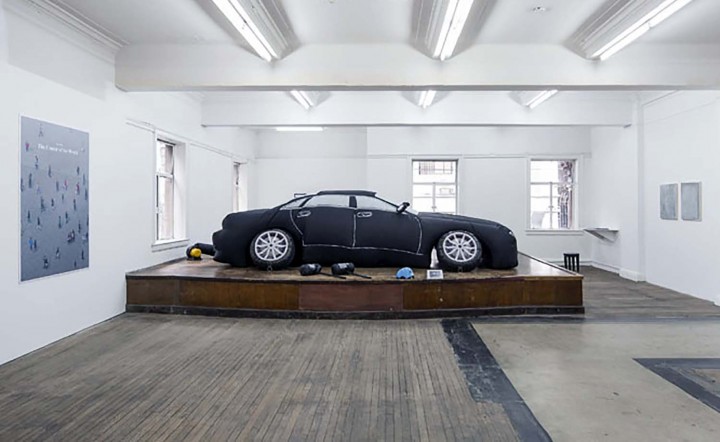Founded in July 2013 and located near Shanghai’s historic Bund area, BANK functions as the offices and studio of MABSOCIETY, an international curatorial and consultancy firm dedicated to an exhibition program that engages international issues of contemporary art and culture.
Flash Art talked to its founder and director, Mathieu Borysevicz, who has been active in the contemporary arts of China since the mid-1990s.
BANK seems to be a natural development of your personal experiences in the art world. You were Artforum’s Shanghai editor and the director of the Shanghai Gallery of Art; now, with your own gallery, what sort of dialogue are you seeking with the local art scene?
Before Artforum and SGA, besides independent writing and curating, I was a practicing artist right up until not so long ago. Therefore, BANK is an experiment to see if I can harness the resources I developed in the past to do something unique. The roles of artist, critic and curator all have their limitations in terms of control and influence, but in running a space you create your own system. BANK was originally conceived of as a “curatorial studio,” a place where I could program exhibitions and events that I felt were interesting, significant and, more importantly, that no one else was doing.
The program doesn’t seem to stick to a specific generation of artists. What is the core of your curatorial approach?
Good art is good art. People seem to think of us as championing the younger generation. Certainly we have a penchant for freshness, but I believe it is just as contemporary to look backwards as it is to look forwards. We’ve shown Paul McCarthy’s Painter (1995) alongside a recent Li Jinghu performance, and the two made a very fruitful conversation. We have also shown a Dieter Meier piece from 1971 alongside a brand new work by the collective Double Fly with similar results.
What’s happening at the gallery in the near future?
Our next show is by a younger Shanghai-based artist named Jin Shan, who has had great exposure abroad but little in his hometown. At the same time we will begin a new series in our project room called “Relics,” which aims to revive works and artists that have been neglected over the last few years but whose contribution to the arts of China have been immeasurable. The first incarnation will focus on the artist Maryn Varbanov, who unexpectedly died in 1989. He was a Bulgarian artist who, among other things, opened up the fiber arts studio at the China Academy of Art in Hangzhou and mentored people like Gu Wenda and Hou Hanru.



